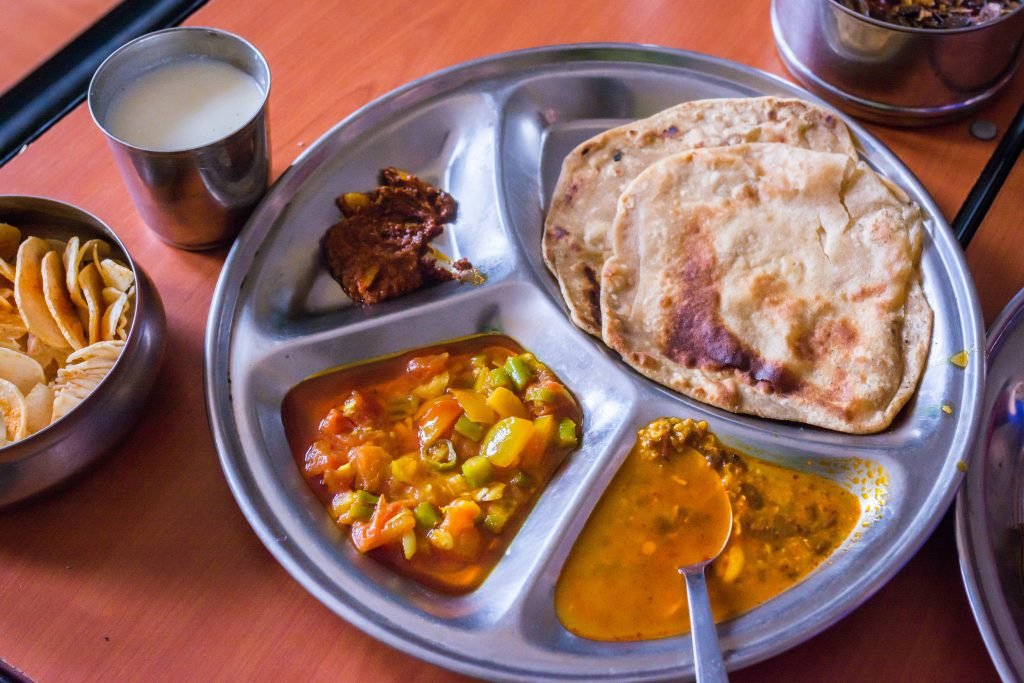Nutrition is the study of how foods affects our body. It is about what, how much, when, and how the body accepts etc.
Nutritionism:
It is not recognizing the food, and dividing in groups, forming myths and perceptions.
Factors Responsible for Nutritionism:
- COLONISATION – This results in poor health of people in countries. One of the major causes, slavery, leading to poor confidence of their own food legacy. Increasing the consumption of foods like biscuits or tea, soup or toast are more healthier than dal or rice.
- NUTRITION TRANSITION – The two main reasons reasons for this transition are- Intelligent food marketing and lack of value for Native Foods. Others include-
- The transition from traditional eating to western diet (eating from packet)
- More packaged or processed food available in the market
- Drop in physical activities leading to non-communicable disease like obesity, diabetes, heart issues, cancer, mental health issues etc.
- For example- birthday treats of pizza, cakes, cokes, pancakes vs. traditional methods and foods
- Carrots which are a good source of Vitamin A is not absorbed by the body without the availability of right fats. Instead, pumpkin cooked in a native way is a better option
- Thinking consumption of cashew or coconut is bad, due to cholesterol, we switch to olive oil, etc, which aren’t native.
- Avoiding home made pickles, with an assumption that it increases blood pressure, a switch to low salt biscuits, etc which are processed.
- Replacing rice with oats, with the fear of diabetes.
- A cause of poor policies. For example, no regulation or standards on selling junk food.
- FOOD & WEIGHT LOSS INDUSTRY
Focus is not on real causes of all these diseases. Rather focus is on the teachings of modern methods and making people switch to new eating habits.
Breaking Top Myths regarding Native Plants!

- Rice
Rice doesn’t lead to diabetes – provided its local, single polished, cook & eat traditionally - Coconut/Cashew/Peanuts
They do not have cholesterol
These are Plant Based – as they do not have a liver to produce cholesterol. It has Phytosterol- which helps in regulating cholesterol levels in human beings - Home-made Pickles
It doesn’t lead to high blood pressure(BP) when consumed in traditional way. Oil and Salt used in the pickle is for lacto-fermentation and preservation (otherwise, bad bacteria grows)
Facts related to Nutrition
- The real problem is the salt in packaged food and not home cooked food.
- Local, seasonal, traditional food, packed with good nutrition is never a problem.
- Follow seated position, silence, and slow eating while consuming meals.
Humans need food, but not individual nutrients. So, a right combination of foods with enough nutrients is essential. Do not miss out on the potential of food – its a source of love, memory, fertility, culture upliftment, and more.
Nutrition beyond CARBS/PROTEIN/FATS/CALORIES
Food is a system from Soil to Soul, and not a Sum of Nutrients!
Nutrition Science globally now realizes and addresses that we should not acknowledge food as per the food group (carb/protein/fat etc). We should rather address it as the NAME of the FOOD.
Empower your students with the knowledge and wisdom of food without confusing them. Make them understand the significance and potential of eating as per the Culture, Cuisine, Climate and sticking to Local, Seasonal and Traditional ways of eating.
How did it all Begin?
- A huge technological advancement in food production after second world war was seen.
- An era of over-abundance of inexpensive food, combined with very little physical activity.
- In the following few decades there were socio-cultural shifts. Women got into workforce. The processed food which was designed to eat more and throughout the day was blooming.
- Resulting in the rise of calorie intake and a drop in nutrition value.
- Global epidemic Obesity– a chronic disease in the 2nd half of 20th Century. Obesity became the mother of several disorders and diseases in humans, such as heart issues, cholesterol, diabetes, thyroid, sleep disorders, PCOS/PCOD, joint issues, and more.
- Numerous efforts were made to reduce saturated fats and total fats from diets.
- Products were made with reduced fats. They also tasted good with additional/artificial/processed sugars and other forms of sugars, salts, and fats. Overall a remarkable rise in the intake of sugar, salt, saturated/trans fat, causing major disruptions in the balance between food availability and energy expenditure.
- Rise of multi trillion dollar sector of health products which is still growing. This is how they got it all right and what we got is all wrong.
Brain washing people and rooting the idea of size/weight deep into our minds, making fat unacceptable socially and physiologically leading to issues like body shaming. All this done over decades through adverts, professionals, media, social media etc confused a layman about his understanding of what is good or what is bad.
Introducing NEW DIET /PLAN /PATTERN which becomes a TREND
- Converting food into macro nutrients (Carb/Protein/Fat ) making people play the number game of counting calories. Unlearning to look at food as food rather than looking at it as groups.
- Making people believe that if the food is tasty, then it’s not healthy, unless its exotic and expensive.
- Spending decades to prove that one of the food groups (Carb/Protein/Fat) is fatal. The cycle continues even today. Each diet trend will encourage you to follow one food group, and banish the others.
- Using professionals, media, social media, adverts, etc to communicate that traditionally eaten food is not right. For example, Spices, Peanuts, Ghee, Coconut, Cold pressed Oils, Traditional Local fruits, do not provide the right nutrition to the body. Then after decades coming back and telling us to consume the same in a packaged, reformed way.
- Spending another decade to convert natural products into refined produces, which gets sold as healthy food or diet food. For example, peanut butter, coconut oil, turmeric shots or pills.
Now let’s talk about SUGAR
There has been a huge increase in sugar consumption in the last 60 years! A sad story of sugar indeed!

- One-sixth of our sugar comes from desserts. The majority of our sugar comes in the form of highly processed food and sweetened beverages.
- Consumer is unaware of different pseudonyms of sugar. It is added to so many of the foods where we don’t expect it to contain sugar like packaged breads, condiments, chips, sauces, and salad dressings.
- Intrinsic sugars (fresh fruits & vegetables) have no adverse health effects.
- Foods with higher shelf life and smoother textures lack in fiber, iron & B Vitamins, depriving the body of good nutrition.
- A sense of illusion of choice and variety is shown with the use of additives, coloring, and preservatives
- Food cooked by Human Beings vs Large Corporations
- This contains more salt, fat, and sugar which are the cheapest raw ingredients
- Nutrient Density = Nutritional Value (Iron, Fiber, B Vitamins) / Calories
- A glass of soda is a calorie dense food
- A bunch of spinach is a nutrition dense food
Let’s learn When, What, and How much to eat?
Every human has the ability to self terminate the Act of Eating. Appetite is a moving entity. It changes everyday, it isn’t fixed. Hence, portion control is not valid, instead work on the proportion control.
It’s a myth that an app or a person or calorie count can tell us how much nutrition the body needs. For example, a child never over drinks mother’s milk, young children do not eat more than what they require. If they are forced, they reject it.
IF YOU MUST COUNT ANYTHING – COUNT YOUR BLESSINGS & MEMORIES & PRANA NOT CALORIES 🙂
All the Asanas practiced in Yoga are to keep digestive fire maintained. Always listen to your stomach, learn the art of eating right!
Mental Meal Map
Jordan Formula – Eat as per your hunger, stop when you are one step away from being totally full.
Hunger and Satiety working well is a sign of good health
- GERLIN HORMONE – tells us when we are hungry.
- LEPTIN HORMONE – tells us when we are full. This would lead to not have food cravings in the night
Wisdom vs Information
- Wisdom has clarity with compassion
- Information will have multiple versions and conflicts with pressure and aggression
Count Prana not Calories
- 3:2:1 is the time-tested proportion for eating your meals
- This proportion allows for maximum nutrients, enhances taste and even looks visually appealing to our eyes.
- 3:2:1 proportion means that you need to maintain a 3:2:1 ratio between grains, dal/sabzi, and pickle/salad/curd etc.
- This maintains optimum digestion, absorption & assimilation of nutrients
Weight Loss
This is one of most discussed topics. Everybody wants to lose weight. Everybody wants to fall into the category of ‘ideal weight’, shape or size. To achieve this, we sign ourselves up for unsustainable methods of ‘weight loss programs’ after hearing about some success stories. These success stories are exciting, but are they effective in the long term? Most likely, not.

We need to choose between a Quick fix and Sustainable solution. If we choose quicker results, we do lose weight, but we gain it back quickly as well. Try to look at weight loss in a different way. For example- losing 10kg isn’t an ideal way to lose weight for our overall health. But losing 10% body weight in a span of 12months is idea. What does this mean-
- you enjoy your life
- no deprivation/ no stress
- weight loss is consistent
- maintaining the quality of hair, and skin
- stable blood pressure
- overall good health throughout the process of weight loss
Trending diets only leave us deprived, frustrated, with almost no impact in our so called weight loss. If at all there is any loss then we only lose our lean body weight, making us look older, low on energy, prone to chronic diseases, and many other illnesses or disorders. In this bargain, we lose all the traditional wisdom of nutrition. So stop running behind conflicting information amongst these trends promising unrealistic, and unsustainable changes.
Instead of this, we need to go back to basics. Eat real whole foods, eat a wholesome meal which consists of all nutrients. A meal that has the right balance, which is not coming out of a packet but made fresh in our kitchen. We should make exercise a part of our day-to-day life and not a hobby. Give up on our sedentary lifestyle, regulate our sleep cycles, spend time with friends, family and loved ones. Stay away from gadgets whenever possible having minimal screen time.
Over Scientification of Food
Avoid measuring food in the means of carbohydrates, proteins, fats, and calories. What we need from food is much more than the numbers and measurements of these Micro Nutrients.
Evaluate compliance of food by checking L-S-T (Local, Seasonal, Traditional), and C-C-C (Cultural, Climate, Cuisine).
eating what you do not like or enjoy will never help you lose weight. It only causes distress, and pushes you away from the thought of losing weight itself.
Food = Health = Happiness = Emotions = Harmony
Cultural Appropriation
This makes you believe that what is sold is from your own culture and brought back to you in an easily consumable form.
For example, Haldi – in the form of pills, shots etc.
Intermittent Fasting
Fasting is in culture but not for weight loss. It isn’t overdone.
With all the shortcut methods weight drops but not the fat weight.
Fat weight doesn’t drop but only body weight drops. This makes us slower, older, and fatter. This compromise in Lean Body Weight leads to a dip in overall health.
Test to Check if the Diet you follow is Good for you or not!
- Check your strength and stamina in the lower body
- In a minute see how many times you can sit up and sit down on a chair
About Nutritional Labels
- Best food (real food) do not have/need labels. Try to avoid consuming foods with labels as much as possible.
- The least amount of ingredients the food has, the better it is.
- Ingredients listed on the top on a nutrition label is in most quantity
- Do not miss the per serving and total serving calories
How to bring moderation to your diet?
- All or Nothing – Consuming too much or eliminating a category or type of food
- Oversized packages are for upselling
- Do not fall for claims of fat free/sugar free, etc
- No food needs to be forbidden
- The art of stopping before feeling stuffed- Feel the contentment and happiness with food. Know the difference between ‘feeling satisfied’ and ‘feeling full’.
- France: I am hungry to I am no longer hungry Vs. I am hungry to I am full
- Japan: Eat until you’re 80% full
- China: Eat until you’re 75% full
- Quran: Eat until you’re 2/3 full
- Eat slowly, good quality food, and eat socially
Promote Overall Health- Return to Home cooking

The process of food being cooked is very important – Home cooked is better diet & healthier
- Home cooked food is better for any diet and is much healthier than any other available food. The process of cooking the food is also very important.
- Use the best possible ingredients. Keep it simple.
- Cooking teaches you to upcycle, share, be creative, and one of the best ways to bring unity amongst people.
- Involve everyone in the family- bring children to the kitchen.
- Take turns in cooking with a partner. This should not be the responsibility of only one person in the family.
- Plan and prepare ahead for the week.
- Everyone in the house needs to learn to cook.
Last, but not the least, empower yourself and take control of what you eat. Do not fall for the commercials, the marketing of the fast food companies. Learn what, how, and when to eat, and do what is right for you, as an individual.
If you are looking for some healthy and nutritious recipes for your next meal, you can check the recipes of Jowar Bhakri and Khichdi here.
Happy Eating!
This blog was originally written by Aarti Kharbanda, Level 2 Indea Yoga Teacher, and edited by Team Indea Yoga. This was a part of her dissertation work during her Level 2 Teacher Training Course.


